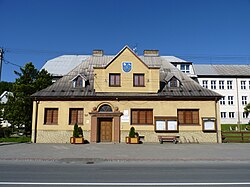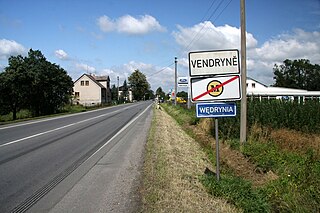
Vendryně is a municipality and village in Frýdek-Místek District in the Moravian-Silesian Region of the Czech Republic. It has about 4,500 inhabitants. It lies in the historical region of Cieszyn Silesia on the banks of the Olza River. The municipality has a significant Polish minority.
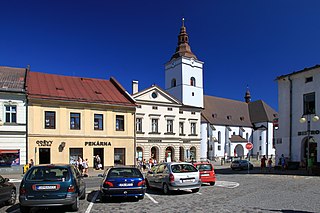
Jablunkov is a town in Frýdek-Místek District in the Moravian-Silesian Region of the Czech Republic. It has about 5,300 inhabitants. The town has a significant Polish minority. It is inhabited by a large amount of Silesian Gorals.

Mosty u Jablunkova is a municipality and village in Frýdek-Místek District in the Moravian-Silesian Region of the Czech Republic. It has about 3,700 inhabitants. The municipality has a significant Polish minority.

Písek is a municipality and village in Frýdek-Místek District in the Moravian-Silesian Region of the Czech Republic. It has about 1,900 inhabitants. The municipality has a significant Polish minority.

Bukovec is a municipality and village in Frýdek-Místek District in the Moravian-Silesian Region of the Czech Republic. It has about 1,400 inhabitants. The municipality has a significant Polish minority.
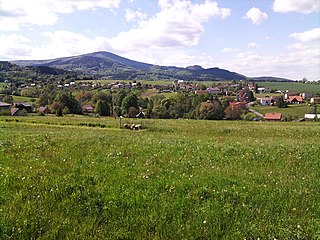
Milíkov is a municipality and village in Frýdek-Místek District in the Moravian-Silesian Region of the Czech Republic. It has about 1,300 inhabitants. The municipality has a significant Polish minority.

Hrádek is a municipality and village in Frýdek-Místek District in the Moravian-Silesian Region of the Czech Republic. It has about 1,900 inhabitants. The municipality has a significant Polish minority.
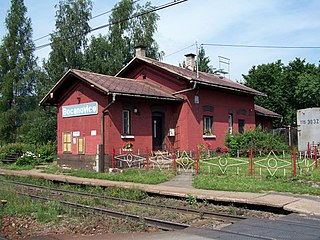
Bocanovice is a municipality and village in Frýdek-Místek District in the Moravian-Silesian Region of the Czech Republic. It has about 500 inhabitants. The municipality has a significant Polish minority.

Dolní Lomná is a municipality and village in Frýdek-Místek District in the Moravian-Silesian Region of the Czech Republic. It has about 900 inhabitants. The municipality has a significant Polish minority.

Horní Lomná is a municipality and village in Frýdek-Místek District in the Moravian-Silesian Region of the Czech Republic. It has about 400 inhabitants. The municipality has a significant Polish minority.

Komorní Lhotka is a municipality and village in Frýdek-Místek District in the Moravian-Silesian Region of the Czech Republic. It has about 1,500 inhabitants. The municipality has a significant Polish minority. The folk architecture in the village is well preserved and is protected by law as a village monument zone.
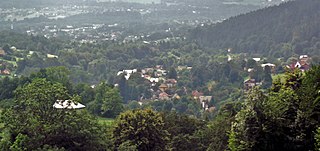
Nýdek is a municipality and village in Frýdek-Místek District in the Moravian-Silesian Region of the Czech Republic. It has about 2,100 inhabitants. The municipality has a significant Polish minority.
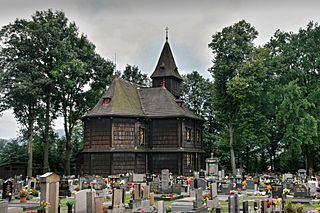
Bystřice is a municipality and village in Frýdek-Místek District in the Moravian-Silesian Region of the Czech Republic. It has about 5,300 inhabitants. The municipality has a significant Polish minority.
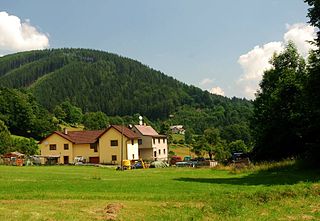
Košařiska is a municipality and village in Frýdek-Místek District in the Moravian-Silesian Region of the Czech Republic. It has about 400 inhabitants. The municipality has a significant Polish minority.

Smilovice is a municipality and village in Frýdek-Místek District in the Moravian-Silesian Region of the Czech Republic. It has about 900 inhabitants. Former Prime Minister of Poland and former president of the European Parliament Jerzy Buzek was born here. The municipality has a significant Polish minority.

Dolní Tošanovice is a municipality and village in Frýdek-Místek District in the Moravian-Silesian Region of the Czech Republic. It has about 400 inhabitants.

Horní Tošanovice is a municipality and village in Frýdek-Místek District in the Moravian-Silesian Region of the Czech Republic. It has about 700 inhabitants.
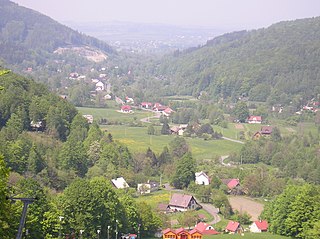
Řeka is a municipality and village in Frýdek-Místek District in the Moravian-Silesian Region of the Czech Republic. It has about 600 inhabitants. The municipality has a significant Polish minority.

Třanovice is a municipality and village in Frýdek-Místek District in the Moravian-Silesian Region of the Czech Republic. It has about 1,100 inhabitants. The municipality has a significant Polish minority.

Vělopolí is a municipality and village in Frýdek-Místek District in the Moravian-Silesian Region of the Czech Republic. It has about 300 inhabitants. The municipality has a significant Polish minority.
